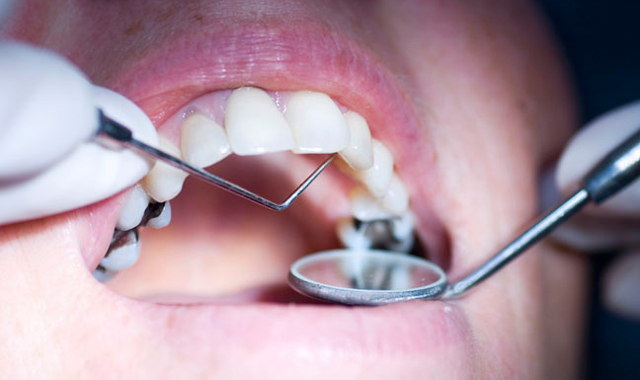5 Ways Your Composite Choice May Be Costing You Money – and Making Your Patients Unhappy
Are you committing these composite faux pas in your practice?
When it comes to dental restorations, both the patient and the dentist want the same thing: beautiful restorations that are as strong and esthetic as natural, healthy teeth. Both patient and doctor also prefer to have the procedure done efficiently and effectively; that is, no time is wasted waiting for a composite to set, and once the composite is in, it is both comfortable and durable. No patient wants to experience sensitivity, and neither dentist nor patient wants to spend what little time they have redoing a procedure that didn’t stick the first time.

Posterior restorations make up about 80 percent of what a general dentist does in the practice, but it’s unfortunately not something that gets a lot of attention. Because it’s the “bread and butter” of the practice, as David Rice, DDS says, it matters more than we think. Are you committing these composite faux pas in your practice?
More from the author: 5 ways new bulk fills are providing better results

1. Bulk filling with composites that weren’t designed for it
“In some instances, I think that the idea of bulk cure materials out there has affected things somewhat,” says John Flucke, DDS. In recent years, more companies have brought bulk fill materials to the market. At the same time, many companies are introducing high-quality curing lights. The combination of advancements in these two arenas has led to a lot of misconception around what it takes to place a quality restoration, he says.
“Doctors think that if they have a good curing light, they can bulk cure anything on the market, regardless of whether the material was designed for bulk cure,” Dr. Flucke says. “They’re confident that it will set with their light, but there are other things that go into a bulk cure that need to be taken into consideration.”
One of those things is how much the composite shrinks and if there will be shrinkage stress. While it’s typically a minimal amount of shrinkage, it is a catalyst of a restoration’s failure, and some shrink more than others.
Related article: 10 common direct dentistry mistakes to avoid
“The way you minimize the shrinkage stress is by placing the composite incrementally, in 2 to 3 millimeter bits,” he says. “You place it, condense it and cure it bit by bit. If a material has a high shrinkage factor, you can overcome it by putting smaller layers in there. If they shrink, they’re so small that it doesn’t make a big difference overall. But if you put them in as a whole, it pulls the tooth in as it shrinks.”
As the material shrinks, the cuffs will bend and crack as it’s cured, leading to tooth fractures, long-term failure of the restoration and patient discomfort.
“You can go with using an adequate composite, but you can’t try to make it do something that it wasn’t designed to do,” he says. “If you’re doing that, you’re going to get pain and problems, and you’re going to have to go back in.”
3M Filtek One offers stress relief on bulk fill restorations up to 5 mm, which makes it an excellent option for about 80 percent of posterior restorations.

2. Not doing research
“Our first obligation is to do no harm to our patients and to know what we’re using,” Dr. Rice says. He encourages dentists to do their own research when searching for the right materials and products for their practice and patients.
The “bottom rung” of composites are those that are merely acceptable, Dr. Flucke says. On the other end of the spectrum are the exceptional composites, all known for exceeding expectations in specific areas, whether for bulk curing, esthetics or time savings, he says.
“The first thing to do is do your research,” Dr. Rice says. “Trusting your rep is important, but trusting your rep over your own research is foolish.”
Trending article: Meet the Dental Products Report Top 25 Women in Dentistry for 2017
That means looking at clinical studies. “It’s not the most exciting thing to do,” he says. “It is, however, the right thing to do. You cannot go to a company’s website and expect to get the full story. Independent research is king.”
For dentists who rely on word of mouth and referrals from their peers, he advises to speak to the specialists. “They traditionally do the homework, while many GPs tend to rely on referrals,” he says.
Research might lead doctors to reading up on nanotechnology in composites (nanocomposites), which help to ensure a smooth surface after polishing and a more esthetic final result. According to a 2013 study in the European Journal of Dentistry titled “Nanotechnology and Dentistry,” nanocomposites are easier to shape, stronger and more resistant to abrasion.
“The smaller the particles, the shiner and prettier the composite,” Dr. Flucke says. “Filtek Supreme has 50 percent of the U.S. composite market because it is so pretty and because of the way it handles. The thing about using nanoparticles is that the composite handles more like butter. It’s softer and easier to use. If you put large particles in the composite, it’s stiffer, making it harder to place in the tooth and manipulate. The tiny particles allow it to be much more workable. It’s esthetic. You can polish Filtek Supreme to shine incredibly well. It also has this consistency that allows you to place it exactly where you want it to go.”
“It used to be that particles were really big, so composites would look good on day one, but they would wear quickly and start to look bad and need to be replaced within a short duration,” Dr. Rice says. “Nanotechnology is about maximizing the performance of the material and how long it lasts from a wear standpoint as well as how it works with that tooth and how kind it is to the teeth around it.”

3. Trusting that the latest always means the best
It’s not just the composite choice costing you money and happiness -- it could also be your bonding system.
Bonding systems are a critical component of the direct restoration, of course. Unfortunately, the way bonding systems are categorized is confusing for many dentists.
“The other problem of referring to bonding systems by generation is the connotation that the higher up we go in generations, the better the bonding system would be,” writes Vivek Mehta, DMD, FAGD, and a member of the Spear Education team. “In the world of software, as you move up to higher versions, it becomes better and faster; however, bonding agent generations don’t work this way.”
Whether you prefer to use self-etch, selective-etch, or total-etch is up to you and what works best with your technique.
More from the author: What digital dentistry means for implants
“There are different ways to place composites through different generations of bonding,” Dr. Flucke says. “I use a fifth-generation technique. It gives you some incredibly high bond strengths, but it is technique sensitive. You’ve got to do it right. If you don’t, you might get some post-op sensitivity.”
While fifth-generation bonding was the norm for dentists at one point, many are now favoring seventh- and eighth-generation bonding to speed up the procedure and eliminate sensitivity.
“The idea is that it decreases the steps and offers friendlier chemistry, so it doesn’t cause sensitivity,” he says. “The trade-off is that they don’t bond as well. In the bond strength test of how well the composite sticks to the tooth, the fifth-generation gets much better results. I’d much rather do a fifth-generation technique right than do a self-etch technique right because if they’re both done well, the fifth-generation is going to last longer and be better for the patient.”
“I think what’s important is to understand that you have options,” Dr. Rice says. “Everyone is going to have their favorite bonding technique, so it’s valuable to know that they can successfully use the technique that they prefer.”
Scotchbond™ Universal Adhesive is a combined total-etch, self-etch and selective-etch adhesive that is said to offer virtually no post-op sensitivity.

4. Trying to cut costs on materials
Dentists should cut cost on time, not materials, Dr. Rice says. You can do that by finding a material that allows you to do your best work in the most efficient way.
“When people start looking at efficiency in a practice, it’s not about trying to save money on a product,” he says. “Invest your money in a product that you can place more efficiently and effectively so that you can save your money on time.”
For an anterior restoration, the priority is esthetics. Dr. Rice prefers to layer a traditional composite because it looks nice and it’s durable. However, posterior restorations are more efficiently placed in bulk.
“Instead of me needing to apply five or six layers of composite if I’m placing it the way I’m supposed to, I can now do it in one or two layers,” he says. “That does a few things for me. It makes me efficient because the time it takes me to place two layers is far less than the time it takes me to do six layers. The second piece is that every time you add a layer to a layer, there is an opportunity for those layers to not be fully integrated with each other. If you looked under a microscope, they’re not one big piece. You can tell that there are seams or micro-gaps between layers. That is cause for a restoration to fail prematurely. The fewer layers I have to place, the more predictable I am, and the less risk I have for any of those things to happen. I’m faster, I’m better, and depending on whose bulk fill composite you use, it can look really pretty in addition to those two functional benefits.”

5. Seeing too many redos in the practice
Dentists can also save time by investing in long-lasting materials that allow them to perform at their highest standard.
“For composites, it doesn’t matter what you’ve placed first. If you’ve done a reasonable job, it’s going to look great for the first year,” Dr. Rice says. “However, if you compromise on the quality of the product or your technique is compromised, within five years your restoration is going to break down.”
Patients face a lot of obstacles in getting to the dentist, the most common of which include taking time off work and paying for the cost of the visit.
“Patients don’t want to take time off work and do all of the things they have to do to get back into the dental office,” Dr. Flucke says.
Trending research: Can dentists use squid ink to check for gum disease?
“You really have one shot at having a tremendous reputation in your community and it doesn’t take a lot to tank that reputation,” Dr. Rice says. “Imagine that you decide to spend $30 on something instead of spending $50, and you’re going to save costs and cut your time on technique. Suddenly, you have a couple hundred patients who got a poor result and aren’t happy. Statistically, they each go tell 11 people, so that could expand to over 1,000 people in a very short period of time because you didn’t make the best choice.
“If you have to redo something, you’ve now immediately lost money by treating that patient. For me, that’s my pain today. My pain big picture is the cost to my reputation. Communities are small, even in a larger city, and if people start talking about bad experiences, suddenly I’m no longer the go-to dentist in town and I’m in trouble.”
“We’re programmed morally and ethically as dentists to do our absolute best every time we sit down,” Dr. Flucke says. “Sometimes, despite our best efforts and using the best materials, things don’t go right.”
Choosing the composite material, bonding system and technique that work for you is the first step to getting your fill of bread and butter in your practice. Direct restorations may not be the coolest part of dentistry, but it’s certainly one of the most important for your practice and your patients.